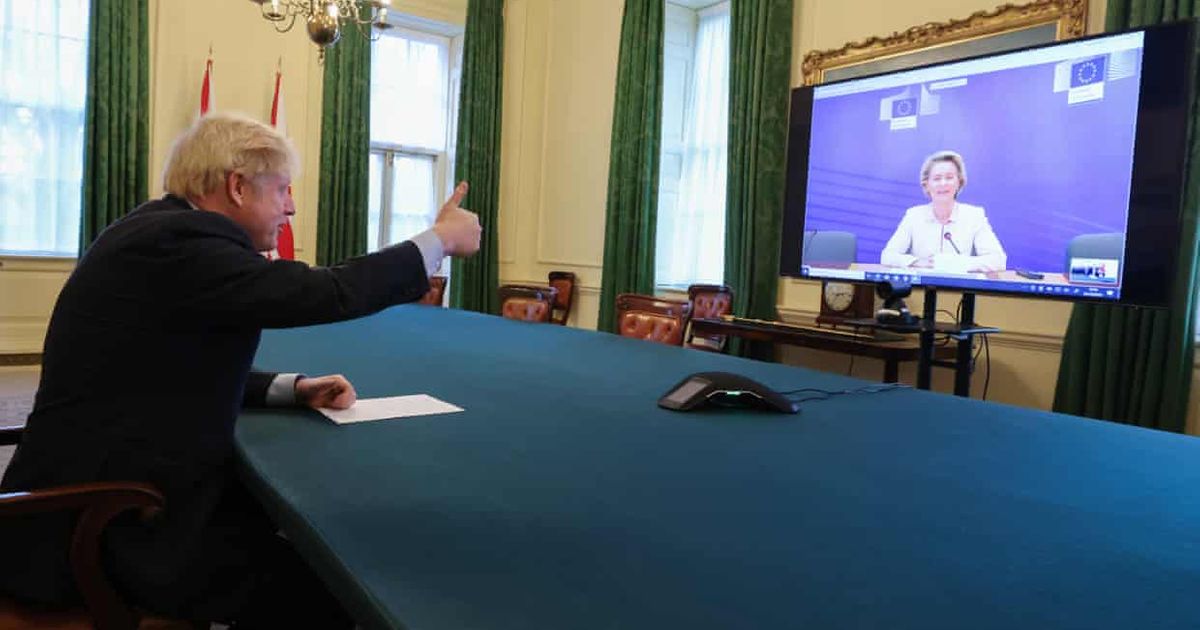ART WORLD NEWS
Art specialists pore over the Brexit trade deal—and deliver their verdict
Boris Johnson speaks to Ursula von der Leyen by video link from Downing Street after completing the Brexit deal
courtesy No 10 Downing Street
After years of negotiations, parliamentary votes and general upheaval, the UK government signed an historic trade deal with the European Union on 24 December, a week before the end of the Brexit transition period. The trade agreement, running to 2,000 pages, is “unprecedented in scope”, says The Guardian (British lawmakers are due to vote on the deal on 30 December though the legislation is expected to pass).But how will it affect the UK’s place within the global art market? We asked three trade and cultural property experts to highlight key aspects of the new EU-UK Trade and Cooperation Agreement. Bendor Grosvenor, art historian and columnist, The Art NewspaperThis is a dismal deal for the UK art market. It is now more difficult and expensive for UK companies to trade in art in Europe than at any time since 1973. In fact, thanks to the Northern Ireland Protocol, it is also more difficult for UK companies to trade in art within the UK.Import VAT will have a significant impact. Any work of art bought in Europe will now be 5% more expensive (dealers who use the margin scheme cannot use the new postponed vat accounting rules). European collectors wanting to buy art in the UK will have to pay import VAT according to their own country’s rate (for example, 7% in Germany, 9% in the Netherlands). Consignors aiming to sell works to European collectors may well begin to favour auction houses within the European Union. France, with the lowest rate of import VAT—at 5.5%—will become the preferred conduit for art sales within the EU.There is no sign of the UK government allowing the UK art market to deregulate to become more competitive. The UK has even committed within the Brexit deal to maintaining an artist’s resale right. New EU regulations on the import of cultural goods will also be enforced in the UK. Many dealers and auctioneers are still in denial about the impact of Brexit, influenced in part by surveys which consistently under estimate the value of intra-EU trade. The damage to the UK art trade will be slow, but remorselessly cumulative. And in about ten or fifteen years’ time, we’ll find Paris beginning to overtake London as the centre of the European art market. Ivan Macquisten, writer and art market specialistWith the art market, it has never been about tariffs, but red tape. It’s still not clear to me whether the deal will alleviate any of the new obligations for trade goods within the art market when it comes to import and export declarations—I suspect not. However, the sections on import and export licensing procedures do stipulate that the government must make all relevant information on import licensing clear via its website and then give 21 days’ grace before enforcement, and 45 days for new export regulations.Whatever guidance it has given up to now has been based on assumptions of what might happen, so although I am not a lawyer, it strikes me that the government must provide total clarity once the deal has been officially passed by all relevant authorities and then allow for the implementation period. That tells me that enforcement should not happen before the end of January at the earliest for imports and around the end of February at least for exports, possibly later. Either way, change is coming and art market businesses need to adapt now in accordance with the Third Country rules they already use for markets like the United States.Alexander Herman, the assistant director of the Institute of Art and LawThe first [key aspect] would be the incorporation of some of the EU directive on the return of cultural objects unlawfully removed from the territory of a member state. This directive was first implemented into each EU member state in 1993/94 and facilitated cooperation between the member states for the recovery of unlawfully removed national treasures (post-1993) from other member states, as well as providing each State a right of action in the courts of another member state to recover such material. The recent agreement maintains the first part (cooperation) but not the second (right of action). It’s a good sign because it means there will be mutual assistance if an important artefact is smuggled from the EU to the UK or vice versa. It also applies to items on loan that aren’t returned at the end of the loan period or where the terms of the loan are breached, as in the directive.I’m also interested to see in the agreement that there will be a mechanism for temporary admission, whereby import duties and taxes will not be charged on goods brought in temporarily for display at exhibition and for cultural purposes, amongst other things. This will be of great benefit to museums in the UK and EU by facilitating the process for international exhibitions and removing customs or VAT costs.Finally, and this is not in the agreement, you would have seen from my Twitter account and recent blog post that the UK has adopted the prohibition on introducing unlawfully removed cultural goods—found at Article 3(1) of the EU Regulation 2019/880—on the introduction and the import of cultural goods. This came into force earlier this week and the Department for Digital, Culture, Media and Sport (DCMS) has stated that its application will continue after 1 January. In my blog post I explain the subtle but important legal change this will introduce. In theory, the UK could have repealed it after 1 January, but the government has promised to stick to it.
Source link













